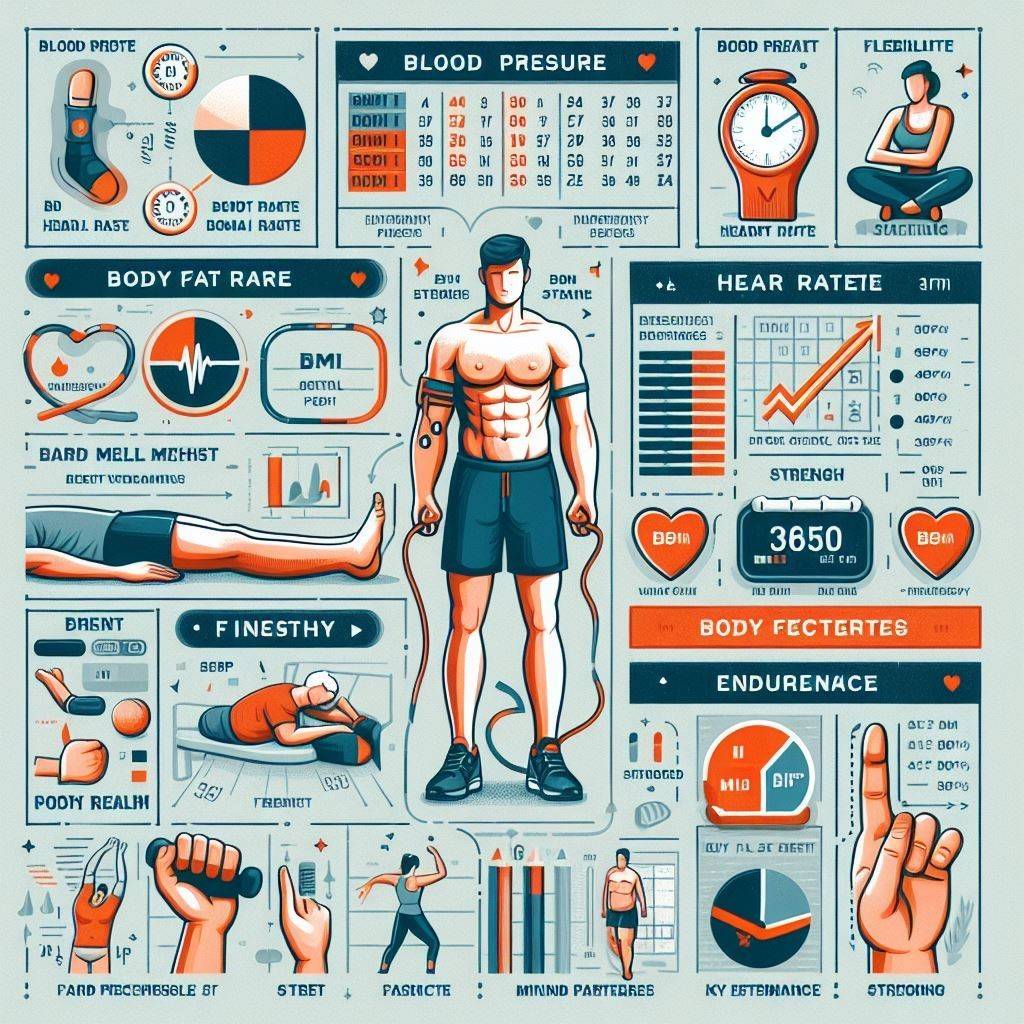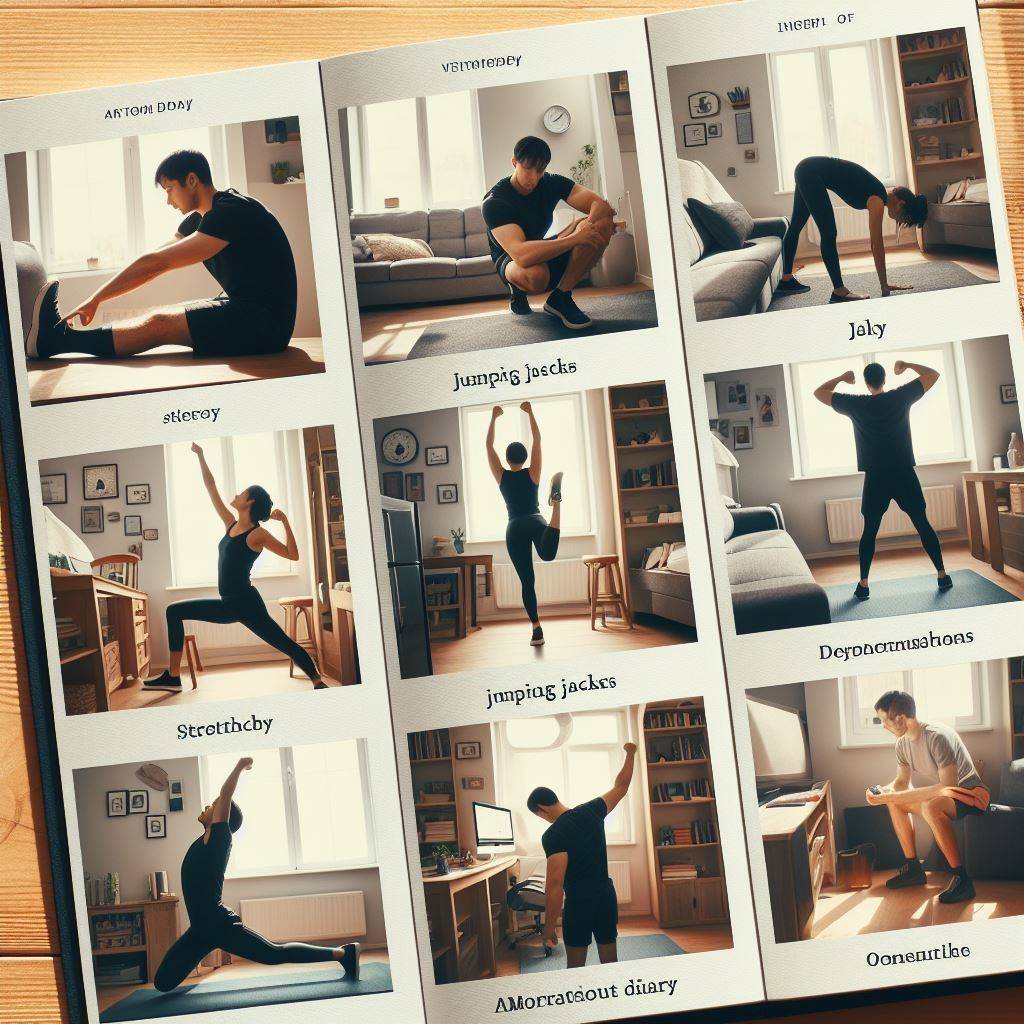Lifetime Fitness Essentials: Building a Healthier Tomorrow
Prioritizing lifetime fitness leads to better long-term health, quality of life and happiness. This multi-part guide for essentials provides practical tips on starting and sticking with healthy physical activity habits that last.
Key Takeaways on Lifetime Fitness
- Adopting lifelong fitness habits early leads to better health
- A complete lifetime fitness plan incorporates cardio, strength training, and flexibility
- Allow for flexibility, as fitness routines must adapt over decades
- Small, regular activity amounts to more over a lifetime than short, intense bursts
- Having an accountability partner and tracking progress boosts motivation
Part 1: Assessing Your Lifetime Fitness Starting Point

It means making regular physical activity a permanent part of your lifestyle. The goal is healthy movement habits that last four years – not short-term diet and exercise plans soon abandoned. Consistency over time is key rather than sporadic, intense workouts.
Before creating a tailored lifetime fitness plan, objectively assess your current baseline across a few areas:
- Recent activity levels – have you been completely sedentary, moderately active or very vigorous recently? Why?
- Injuries or conditions – are there chronic issues or mobility considerations to work around?
- Enjoyable activities – what types of movement do you inherently enjoy? Dislike? Why?
Recording cardio capacity, strength benchmarks, flexibility limitations, and overall endurance provide quantifiable data. But also examine emotional outlook, energy levels throughout the day and sleep quality.
This detailed lifetime fitness assessment quiz collects multidimensional data on your starting status. Benchmarking current capacity across physical, mental and emotional vectors allows for tailored planning.
Elements of a Lifetime Fitness Regimen
Design daily movement habits targeting muscle groups equally and getting heart rates elevated. Fitness regimens include:
Cardiovascular exercise: Jogging, biking, swimming, dancing – anything raising heart rate. Aim for 20-30 minutes daily by accumulating duration. This strengthens the circulatory system for enhanced oxygenation.
Muscle-strengthening movements: Bodyweight squats, resistance band routines, free weights routines. Aim for 8-12 strength reps, 2-3 days weekly. This builds metabolism-boosting lean muscle mass.
Flexibility training: Focused stretching, yoga flows, Pilates. Hold stretches for 30 seconds, 2-3 days weekly. This boosts joint mobility and alignment, reducing injury risks.
Additional Lifetime Fitness Tips
- Start slow with lifetime fitness goals – minimize burnout and soreness through gradual ramp-ups
- Prioritize small frequent workouts over long sporadic sessions for consistency.
- Rest days are essential – muscles need recovery time to fully strengthen
- Track progress via apps, bands, or journals to quantified changes keeping you motivated
- Incorporate physical activity into daily routines – take stairs, walk meetings, do mini-workouts during Netflix binges!
Part 2: Maintaining Lifetime Fitness Goals Long-Term

Initial fitness modifications require concerted effort forming new lifelong habits. However, maintaining high lifetime fitness activity over decades needs additional considerations as the body and life circumstances change.
Allow Flexibility Revising your Fitness Goals
New jobs, pregnancies, disabilities, moves, or injuries require rethinking lifetime fitness routines. That’s normal! Recalibrate exercise plans to accommodate new seasons of life while preserving regular activity as best you can.
Focus on consistency first before duration or intensity. Doing some activity trumps nothing at all. 15 minutes of walking still elevates the heart rate, burning calories, releasing endorphins and maintaining momentum, building lifelong fitness habits.
Tailoring Lifetime Fitness Workouts by Age
Target different fitness benchmarks as the body changes over decades:
| Life Stage | Lifetime Fitness Goals |
| 20s & 30s | Build strength/muscle with weight/resistance training 2-4 days a week |
| 40s & 50s | Incorporate more low-affected cardio, flexibility/balance exercises |
| 60+ | Prioritize mobility, stability and fall prevention with gentle activities |
Regardless of age, some activity always benefits physical/cognitive health. Tailor lifetime fitness workouts to developing capacities. Slight movements have made enormous improvements over decades.
Join Lifetime Activities or Sports
Participating in long-term sports, classes, or hobbies provides built-in fitness motivation and social support. Consider:
- Local volleyball/softball leagues
- Ongoing yoga/Pilates/cycling classes
- Individual sports like tennis, golf, bowling leagues
- Outdoor clubs for hiking, biking, snowshoeing
Find an Accountability Partner
Sharing the journey with a like-minded partner provides encouragement to tackle inevitable lifetime fitness ups and downs. Check-in regularly, train together occasionally, troubleshoot setbacks mutually and celebrate shared milestones.
Part 3: Appreciating Small Lifetime Fitness Gains

Aiming for an ideal but unattainable fitness level or physique can quickly sabotage motivation. Instead, acknowledge small lifetime fitness victories:
- Hitting a new personal record at the gym
- Finishing a 5k without walking
- Mastering a tricky new yoga pose sequence
- Sticking to a workout routine for a full month
With a decades-long framework, a few minutes of daily activity trumps intense workouts intermittently. Tiny gains accumulate into transformed health over the years. Remind yourself, “something is better than nothing.” Do what reasonably fits your schedule today, consistently showing up while being gracious to your developing body.
Frequently asked questions
Who is the CEO of Lifetime Fitness?
The current CEO of Lifetime Fitness is Bahram Akradi. He founded the company in 1992 when he opened the first lifetime fitness gym in Brooklyn Park, Minnesota. He has served as CEO and chair of the Board since the beginning.
What is meant by lifetime fitness?
Lifetime fitness simply means making regular physical activity a permanent part of your lifestyle over your entire life. It’s about building sustainable, healthy habits that keep your body active and fit as you age. Things like cardio, strength training, and flexibility exercises are done consistently.
Can you go to any Lifetime Fitness location?
Yes, with a nationwide membership, you can access any of the over 150 Lifetime Fitness health club locations across the United States. Your home club is your prime location, but membership allows entry to other gyms when travelling or visiting different areas.
Can I add my girlfriend to my Lifetime Fitness membership?
Unfortunately, Lifetime Fitness does not allow members to add partners, girlfriends/boyfriends or spouses to an existing individual membership. Your girlfriend would need to purchase her membership. Some locations do offer discounted partner add-on options. Check with your local gym.
Who founded a lifetime gym?
Lifetime Gym was founded in 1992 by Bahram Akradi. He opened the first club in Brooklyn Park, Minnesota, called lifetime Fitness. Over the next 20+ years, he grew it into a network of over 150 luxury health clubs across North America.
Who started LifeTime Fitness?
Lifetime Fitness was started by Bahram Akradi in 1992 when he opened the first fitness center in Brooklyn Park, Minnesota. He remains the company’s CEO and Chairman today, overseeing strategic expansion, brand development, and a comprehensive healthy living philosophy.
Who is the father of all fitness?
There isn’t a singular “father of all fitness,” but some pioneers include Eugen Sandow, Jack LaLanne, Joe Weider, and Arthur Jones. These men helped develop modern strength training, aerobics, nutrition principles, and exercise equipment still used today.
How old is Life Fitness?
The Lifetime Fitness brand was founded in 1992, making it over 30 years old as of 2023. But the company traces its history back even further to an athletic club Bahram Akradi purchased in Chanhassen, Minnesota in 1985 that served as a precursor to a lifetime.
Which country made fitness first?
Several civilizations contributed to early fitness concepts, but Sweden was the first country to incorporate formal physical education and movement programs into schools in the early 1800s. This catalyzed a greater societal focus on fitness, health, and well-being.
Conclusion
The key to lifetime fitness is consistency. Small amounts of regular activity serve you better over decades than intense bursts sporadically.
Stay flexible, adapting your fitness routine to life’s changing circumstances. But keep moving most days without overdoing it or beating yourself up.
Progress, not perfection, counts when building sustainable healthy habits for the long haul.
Do what reasonably fits into each season of life. Be gracious with yourself and celebrate the small gains as they compile into better lifelong fitness over time.



